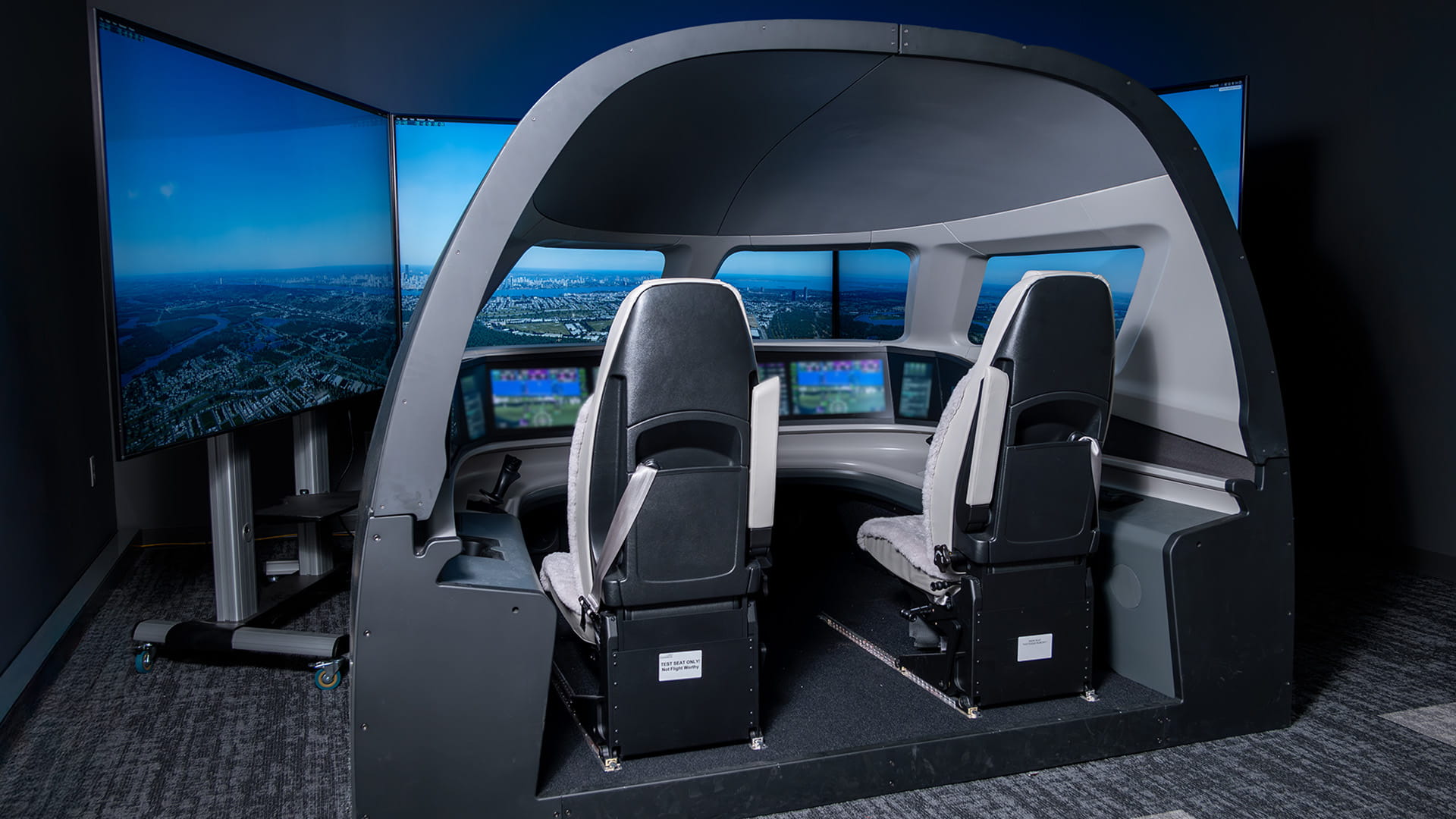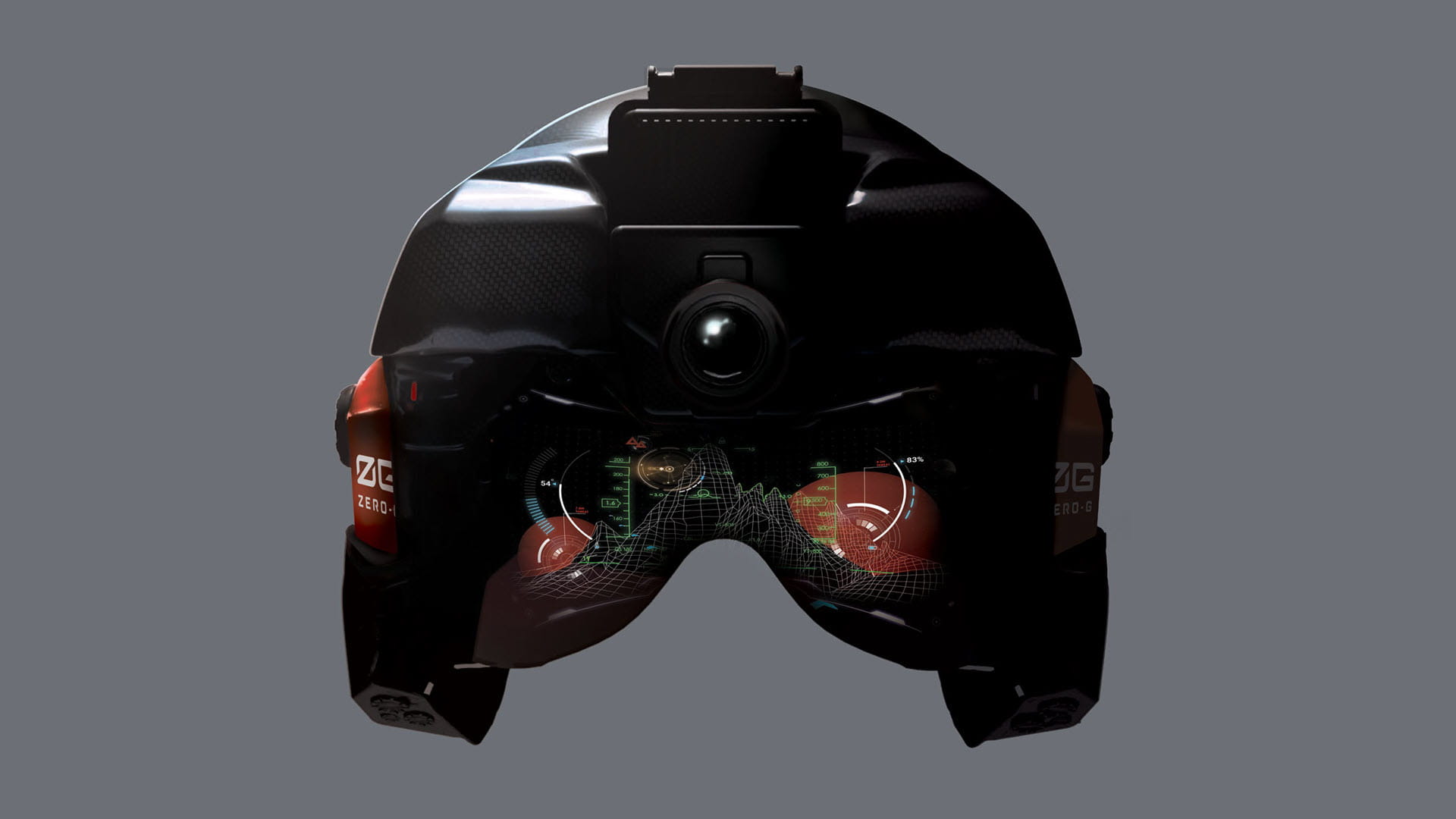Taking autonomy to new heights
New systems help pilots, simplify flight – and keep humans at the helm
In the middle of it is an experimental flight deck simulator, and in the middle of that simulator is Dave Gribble. He sits in the glow of the display and prepares for takeoff.
Traditionally, he’d be flipping between checklists on a screen, verifying the flight plan, twisting knobs and toggling switches, all while listening for air traffic control on the radio.
But today, he won’t have to worry about any of that.
Powering the simulator is a series of semi-autonomous software systems that can help with manual tasks and cognitive calculations, freeing pilots to focus on critical thinking and decision-making. Collins Aerospace, an RTX business, has been developing and testing those systems in the demonstrator under a capability it calls “pilot-centric autonomy.”
“It’s all being done with a fresh look at how we can help pilots aviate, navigate, communicate and manage aircraft systems,” said Gribble, a pilot and senior technical fellow for Collins’ Avionics Advanced Technology group.
The work is one example of RTX’s broader strategy for autonomy in aerospace and defense. In addition to capabilities like this one that provide cognitive assistance, the company is also using autonomy to facilitate human-machine teaming so users can plan, operate and make effective, efficient decisions quickly – all while verifying that the technologies are sound and trustworthy in their suggestions.
What is pilot-centric autonomy?
Navigation
Communication
Systems
Each of those toolsets are called managers, and they’re based on a combination of existing and new capabilities. In Cedar Rapids, Iowa, Gribble demonstrated the communication manager’s air traffic control voice recognition function, which uses existing technology from RTX BBN Technologies.
Here’s how it works.
The flight deck’s radio static crackled as a simulated air traffic controller’s voice came through with an updated clearance to tell Gribble he’d need to change his route, where to go and how high to climb.
As the audio came through, a standardized, datalink-style version of the controller’s message appeared on a screen to Gribble’s left. The screen also gave him a choice of sending an automated confirmation to air traffic control or speaking the confirmation over his radio.
After sending an automated confirmation, the system gave him an option to select a suggested route to his new location and begin his ascent.

In Cedar Rapids, Collins Aerospace uses its experimental flight deck to develop and test semi-autonomous technology that will simplify flight.
In current state, the pilot would have to listen and remember the details or jot them down on paper or an electronic notepad. They’d also have to manually find the new location in their flight management system, adjust the controls and coordinate with their co-pilot.
“All of that takes time, and it creates opportunities for error,” Gribble said. “Our new semi-autonomous systems reduce the workload on the crew, and they make it easy for people to use autonomy, even in challenging situations.”
The experimental flight deck allows the team to build, test and improve quickly, but it also exists to demonstrate capabilities to customers and pilots. Since 2024, they’ve demonstrated the flight deck, which has been developed over the last several years, more than 70 times for pilots, aircraft manufacturers and industry experts. They have also hired roughly 30 commercial, business and private pilots to test the systems and provide feedback.
Once the pilots see the system in action, Gribble said, their skepticism changes to excitement.
“Pilots really appreciate the workload reduction and error detection, especially in the communication function, because that’s a problem that they have today,” Gribble said. “They like that we’re trying to solve their problems, and they like that it’s not just engineers trying to be engineers – that we are seeking their input.”
Pilot-centric autonomy also helps crews make safer, quicker decisions, Gribble said, especially if the crew must make a diversion. Unplanned changes require pilots to use several disparate information sources to determine things like weather, traffic and runway conditions, which can be difficult to manage in flight.
“They often get help from the ground, but with pilot-centric autonomy, pilots can also get help from the aircraft. Humans are good at higher-level thinking, so let the computer go get the weather because it’s been listening to it – let the computer bring that to you and do all the math.”
Gribble joined Raytheon in 1989 working on radars in Tewksbury, Massachusetts, but once he got a pilot’s license in the ’90s, he wanted to use his engineering skills to improve aviation technology. He moved to Cedar Rapids to join Collins in 2005. He started working on radio prototypes – some of which were a stepping stone for today’s emerging technology – and was the lead engineer for the first touchscreen avionics system in 2012.
At the time, that seemed groundbreaking even though touchscreens are now an expectation. He said he thinks pilot-centric autonomy will be similar.
“I never thought that I would get to see so much technology growth in my career,” Gribble said. “We have all that technology, all that history, so we have all that to stand on, and now we’re talking about what can we do better? We are working hard to bring new technologies to help pilots fly safely in an increasingly complex world.”


